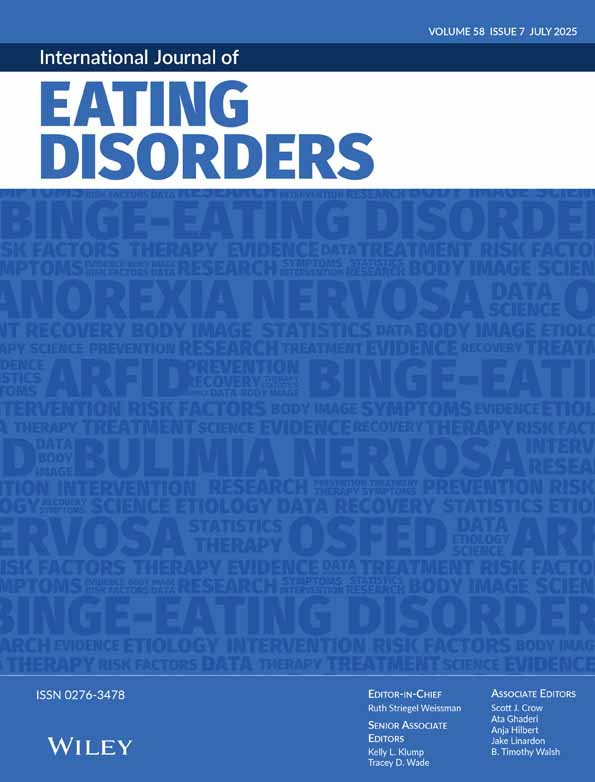Fluid Intake in patients with eating disorders
Abstract
Objectives
The current study examined the fluid intake of patients with eating disorders and factors that may influence the amount and type of fluid consumed. Subjects comprised 81 inpatients with eating disorders.
Methods
A 7-day semistandardized, retrospective fluid history was taken by a dietitian when the subjects were admitted to an eating disorder unit. Total fluid consumed per day was measured, which included all energy-free, energy-containing, and caffeine-containing fluids (all in milliliters per kilogram). Age, body mass index (BMI), and eating disorder behaviors (purging, binge eating, and excessive exercise) were also evaluated.
Results
Fluid intakes ranged from 250 ml to >6 L per day, with an average of 2.7 L. Only 17% of patients had fluid intakes in the recommended range. The most commonly consumed beverage was water followed by diet cola, coffee, juice, and tea. The lower the BMI and the older the patient, the greater the fluid intake.
Conclusions
Fluid intake is variable and should be part of the clinical assessment of the eating disorder patient. © 2005 by Wiley Periodicals, Inc.




